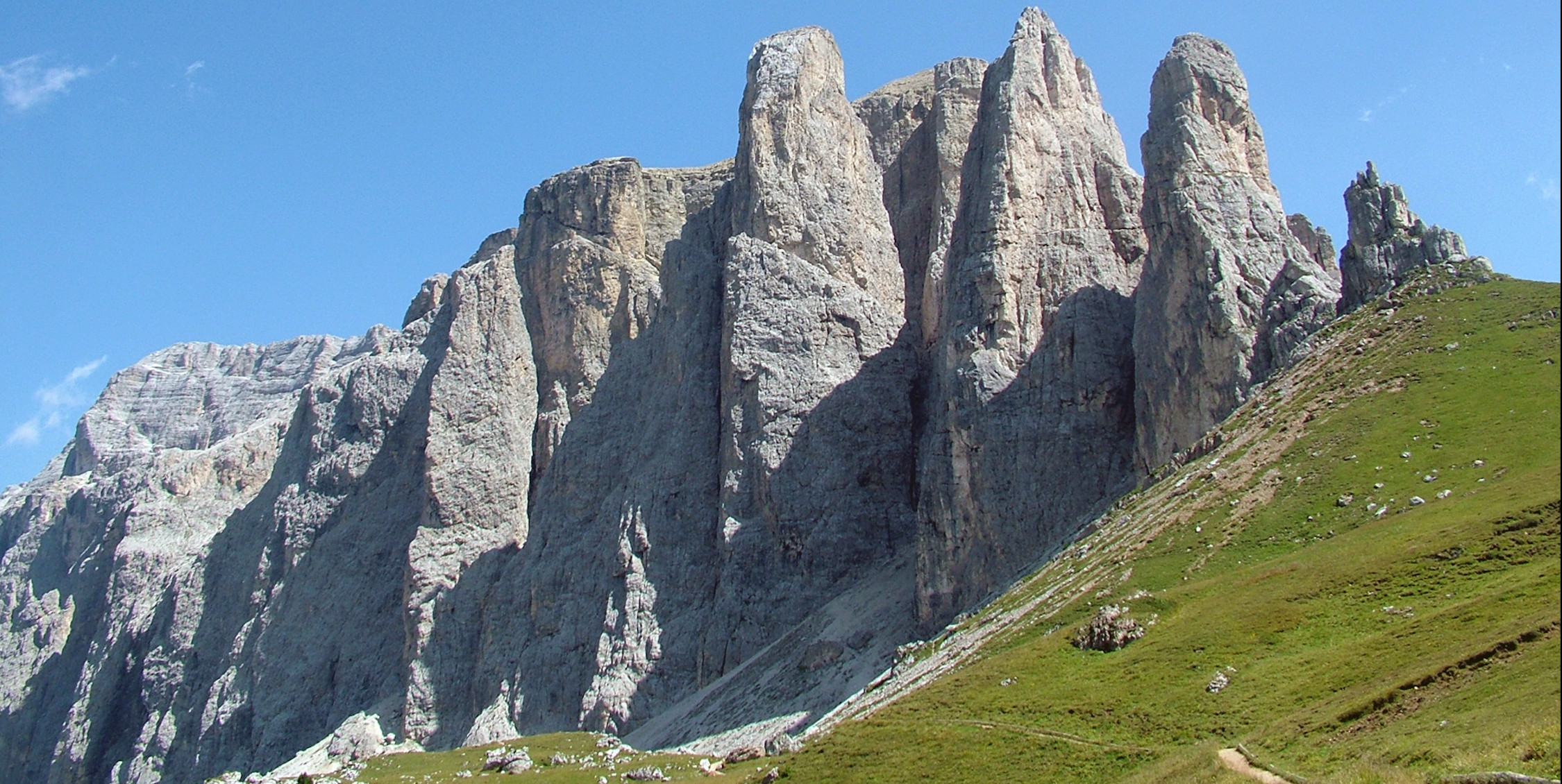13. The lifting of the Dolomites
Some 65-3 million years ago – the Tertiary era
The coming together of Africa and Europe gradually lifted the land they encompassed from the sea. Thus was born the Alpine chain, and with it the Dolomites. With ever greater surfaces of exposed land, an increasing amount of sediment produced by erosion was deposited in the sea. The remaining sea basins therefore rapidly filled up. The deformation of the Dolomites took place in three fairly brief stages and those secrets have come down to us without being lost in the mists of time.
The sea was the receptacle for material originating from the new strips of dry land, that were gradually thrust higher by the compression between Africa and Europe. This marked the beginning of the Alps and therefore of the Dolomites. The processes linked to the growth of these mountains produced a massive quantity of sediment that gradually filled up the remaining stretches of sea that were shrinking fast under attack from the emerging land. The most recent dolomite rocks tell a story of coastlines lined with cliffs and of the residual marine environments in parts of the emergent primordial Alps. Africa pushed against Europe in different directions over time, causing the new-born mountains to fracture, producing splits and deformations in different patterns. The deformations and splits took different forms, such as thrusts and faults, depending on the type of rock and whether these were ductile or brittle.
Two main stages of deformation affected the Dolomite region and luckily these did not adversely affect the geometry of the marine environments of the Triassic Tethys Ocean preserved in the rocks. This has led to the Dolomites being considered an archipelago of fossil islands for the most part intact. Right from their first emergence, the neo-Alps where subject to carving and sculpting.
Text by Dolomiti Project
The rocks of this era



